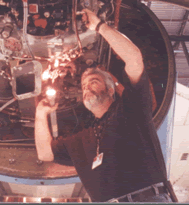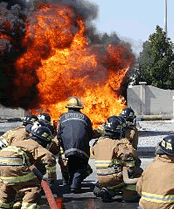|
|
 |
| Cognition
> Attention - 5 of 10 |
|
|
| |
Control
Attention
Control - Our attention constantly shifts as a result of
voluntary direction (internal) or automatically as a result of attention
attracting stimuli (external) in the environment. Our focus of attention
results from whether a stimulus activates Top-Down (internal) or Bottom-Up
(external) processes.
- Top-Down
- Attention control is under conscious direction, using information
residing in memory stores. It is also termed concept driven or
effortful attention. Top-Down attention is purposefully directed
and is influenced by expectancy and relevance, as well as prior
knowledge and experience. Examples are a search task such as when
looking for the face of a friend in a crowd, seeking a specific
item on a control display, or concentrating on performing a task.
Top-down attention is slower than bottom-up attention.*
- Bottom-Up
- Attention is captured by external stimuli, usually unexpected
events. This is also termed data driven or automatic attention.
Examples are a bright flash of light, a loud sound, loss of balance
due to slippery conditions, or impact by an object. Bottom-up
attention is very rapid, reaching its maximum 100-200 milliseconds
after stimulus perception.*
 |
 |
| Top-Down
Processing
Maintainer concentrating on task performance and directing
his attention to parts inspection. |
Bottom-Up
Processing
Smoke & Fire alarms, police and fire engine sirens--all
capture our attention. |
*Taylor,
J.G., "Recent Advances in Understanding Attention," Science
& Consciousness Review, 2003, on-line. |
|
| |
|
|
|
 |










